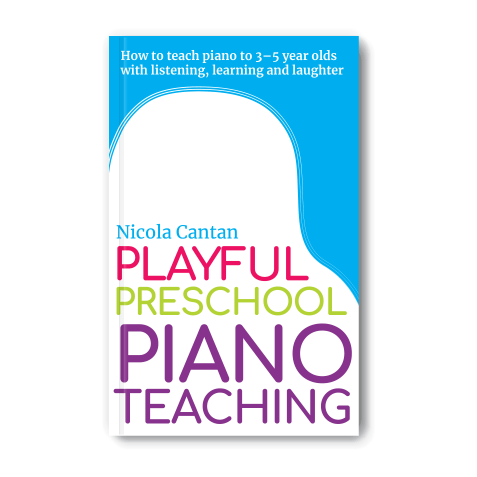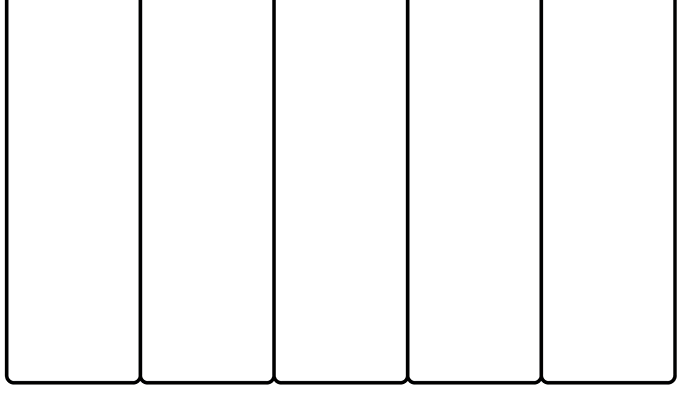As preschool piano lessons gain more and more popularity around the world we need to rethink how we teach technique. Developing preschool piano dexterity requires some different thinking and strategies than you would use with an 8-year-old beginner.

Most of the traditional piano method books start in a middle C five-finger position…but is this really the best approach for preschoolers?
The Problem with Five Finger Positions
Five Finger Positions Encourage Sticky Tipitis
One of the 32 practice ailments I talked about in my book “The Piano Practice Physician’s Handbook” is called Sticky Tipitis.
I’m sure you’ve had students of all ages with this issue. This is where students seem to get stuck to the keys. They’re reluctant to change positions, play full staccato or even hop up or down one key.
This is a danger you run the risk of with any book that stays in certain positions in order to make reading easier.
But it becomes doubly-dangerous when it comes to preschoolers as their reading progress is likely to be slower than older students. So, if you take a tradition fiver-finger, reading-focused approach to piano with a 4-year-old they could be in that position for several years! That will certainly delay developing preschool piano dexterity and is going to cause all sorts of problems down the road.
Preschoolers Have SMALL Hands
Well, duh?!
But do we really realise how small they are? I don’t think most of us fully appreciate how stretched out the five-finger position feels if you’re a 4 year old.
That’s why I made this little tool called the “toofpranie test”. (If you want to know what a toofpranie is you’ll have to read my read ‘Playful Preschool Piano Teaching’.)
The toofpranie test will let you feel how a preschooler feels in a pentascale or five-finger position. Print out the PDF here and try placing one finger on each “key” to see what I mean.
The Best Approach to Developing Preschooler Dexterity for Piano
Eventually, we do want preschool piano students to be comfortable using all their fingers and playing in five-finger positions when needed. But there’s no rush to get there.
My approach to gently guide them towards that eventual goal has 2 parts: away from the piano and at the piano.
Away from the Piano
Preschoolers need to switch activities often with a mixture of big and smaller movement tasks. Take advantage of this by working with fingerplays, puppets and finger tapping games away from the piano to help improve their fine motor skills.
Fingerplays help to develop preschool piano dexterity and also a sense of rhythm and beat as you chant the words together. Members can download my preschool fingerplays here.
Tapping games can also be a great way to work on finger dexterity without the pressure of having to play the right note. These games help preschoolers to practice using fingers independently and also encourage whole arm movement. Members can download Tippy Taps here.
At the Piano
While we’re working on all of this independent finger work away from the piano, our time at the piano is focused on just using one finger at a time and moving the whole arm to play folk songs and rote pieces.
Which finger they use is entirely up to each child and what’s comfortable for them. They will instinctively use either finger 2 or 3 and you can adapt to their preferred finger when playing side-by-side with them.
When you take this gentle approach to technique and combine it with the fingerplays and games to work on fine motor skills off-the-bench, you’ll find that most kiddos will start using their other fingers of their own volition.
This may take just a few weeks or a whole year. Let them move at a pace that suits them. Put the focus on enjoying making music together and the rest will come in time.
Learn More About Teaching Preschool Piano
For more tips on teaching piano to 3- to 5-year-olds, check out my book “Playful Preschool Piano Teaching”. You can also visit my central preschool piano hub for more info on how to get started, plus ideas and resources you can implement right away.
 And if you want a full step-by-step curriculum for group preschool piano classes, just become a Vibrant Music Teaching member and you can access the wonderful Mini Musicians program.
And if you want a full step-by-step curriculum for group preschool piano classes, just become a Vibrant Music Teaching member and you can access the wonderful Mini Musicians program.



Excellent article. I get my students to use ‘owl eyes’, ie when finger 2 braces with the thumb in a curved position. It also encourages whole arm movement but strengthens the finger and gets them used to a natural curve in the fingers. I’ll also develop ‘’owl glasses’ with finger 3 and get them to switch between them, getting them used to changing fingers. I picked this up from the Dogs and Birds approach.
Playdough…..away from the piano, is fantastic for hand strength and dexterity..we make note values, barlines and so on, and tap rhythms out.
I’ve been using some wunderkeys resources for this exact reason with my younger kids. I also get them to push into play dough to help strengthen finger muscles with students with fine motor delays.
Going to get those tippy tap games as they extend the wunderkeys resources by adding “lines of music” for visual representation! Just love that concept Nicola!!